1. Javadi M, Hafezi-Nejad N, Vaccaro AR, Rahimi-Movaghar V. Medical complications and patient outcomes in Iranian veterans with spinal cord injury. Adv Clin Exp Med. 2014; 23:269–275. PMID:
24913118.

2. New PW, Rawicki HB, Bailey MJ. Nontraumatic spinal cord injury rehabilitation: pressure ulcer patterns, prediction, and impact. Arch Phys Med Rehabil. 2004; 85:87–93. PMID:
14970974.
3. Yarkony GM. Pressure ulcers: a review. Arch Phys Med Rehabil. 1994; 75:908–917. PMID:
8053799.

4. Rabadi MH, Vincent AS. Do vascular risk factors contribute to the prevalence of pressure ulcer in veterans with spinal cord injury? J Spinal Cord Med. 2011; 34:46–51. PMID:
21528626.

5. Kim YC, Park CI, Shin JC, Kim SW, Yoo WK. Epidemiology of pressure sore in spinal cord injured patients. J Korean Acad Rehabil Med. 2010; 22:552–558.
6. Stinson M, Schofield R, Gillan C, Morton J, Gardner E, Sprigle S, et al. Spinal cord injury and pressure ulcer prevention: using functional activity in pressure relief. Nurs Res Pract. 2013; 2013:860396. PMID:
23691301.

7. Groah SL, Schladen M, Pineda CG, Hsieh CH. Prevention of pressure ulcers among people with spinal cord injury: a systematic review. PM R. 2015; 7:613–636. PMID:
25529614.

8. Gil-Agudo A, De la Pena-Gonzalez A, Del Ama-Espinosa A, Perez-Rizo E, Diaz-Dominguez E, Sanchez-Ramos A. Comparative study of pressure distribution at the user-cushion interface with different cushions in a population with spinal cord injury. Clin Biomech (Bristol, Avon). 2009; 24:558–563.

9. Levy A, Kopplin K, Gefen A. An air-cell-based cushion for pressure ulcer protection remarkably reduces tissue stresses in the seated buttocks with respect to foams: finite element studies. J Tissue Viability. 2014; 23:13–23. PMID:
24405723.

10. Jan YK, Crane BA, Liao F, Woods JA, Ennis WJ. Comparison of muscle and skin perfusion over the ischial tuberosities in response to wheelchair tilt-in-space and recline angles in people with spinal cord injury. Arch Phys Med Rehabil. 2013; 94:1990–1996. PMID:
23602880.

11. Jan YK, Crane BA. Wheelchair tilt-in-space and recline does not reduce sacral skin perfusion as changing from the upright to the tilted and reclined position in people with spinal cord injury. Arch Phys Med Rehabil. 2013; 94:1207–1210. PMID:
23313352.

12. Jan YK, Liao F, Jones MA, Rice LA, Tisdell T. Effect of durations of wheelchair tilt-in-space and recline on skin perfusion over the ischial tuberosity in people with spinal cord injury. Arch Phys Med Rehabil. 2013; 94:667–672. PMID:
23178540.

13. Sprigle S, Maurer C, Soneblum SE. Load redistribution in variable position wheelchairs in people with spinal cord injury. J Spinal Cord Med. 2010; 33:58–64. PMID:
20397444.

14. Khasnabis C, Mines K. Wheelchair service training package: reference manual for participants: basic level. Geneva: World Health Organization;2012.
15. Khasnabis C, Mines K. Wheelchair service training package: trainer's manual: basic level. Geneva: World Health Organization;2012.
16. Peterson MJ, Gravenstein N, Schwab WK, van Oostrom JH, Caruso LJ. Patient repositioning and pressure ulcer risk: monitoring interface pressures of at-risk patients. J Rehabil Res Dev. 2013; 50:477–488. PMID:
23934869.
17. Yuen HK, Garrett D. Comparison of three wheelchair cushions for effectiveness of pressure relief. Am J Occup Ther. 2001; 55:470–475. PMID:
11723993.

18. Makhsous M, Rowles DM, Rymer WZ, Bankard J, Nam EK, Chen D, et al. Periodically relieving ischial sitting load to decrease the risk of pressure ulcers. Arch Phys Med Rehabil. 2007; 88:862–870. PMID:
17601466.

19. Sonenblum SE, Vonk TE, Janssen TW, Sprigle SH. Effects of wheelchair cushions and pressure relief maneuvers on ischial interface pressure and blood flow in people with spinal cord injury. Arch Phys Med Rehabil. 2014; 95:1350–1357. PMID:
24480336.

20. Previnaire JG, Fontet P, Opsomer C, Simon M, Ducrocq T. Lipofilling (fat grafting) in the secondary prevention of ischial tuberosity and pelvic pressure ulcers. Spinal Cord. 2016; 54:39–45. PMID:
26481707.

21. Yusmido YA, Hisamud-Din N, Mazlan M. Elective proximal lower limb amputation in spinal cord injury patients with chronic pressure ulcers: improve quality of life, function, and shorten hospital stay: case report. Eur J Phys Rehabil Med. 2014; 50:557–560. PMID:
24694951.
22. Kim DA, Yi SH, Lee BS, Lim MH, Ryh BJ, Kim HC, et al. Impact of sitting time on seat-interface pressure of spinal cord injured patients. J Korean Acad Rehabil Med. 2009; 33:614–618.
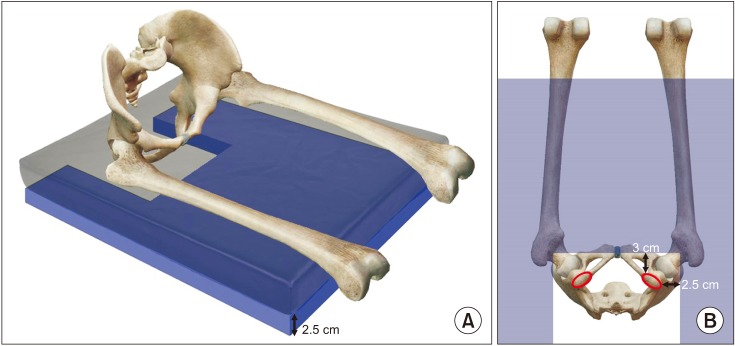
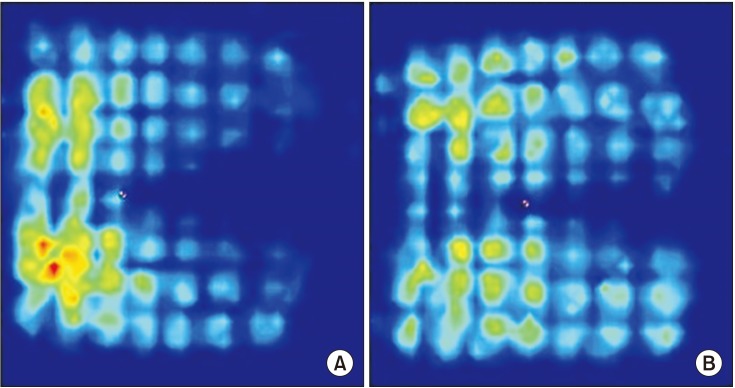




 PDF
PDF ePub
ePub Citation
Citation Print
Print



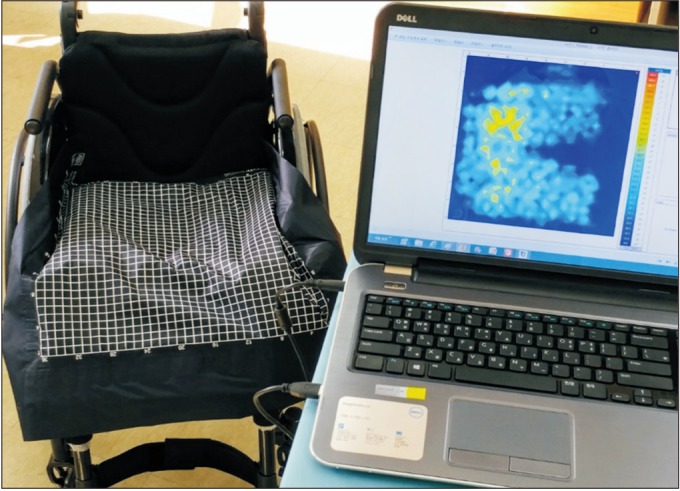
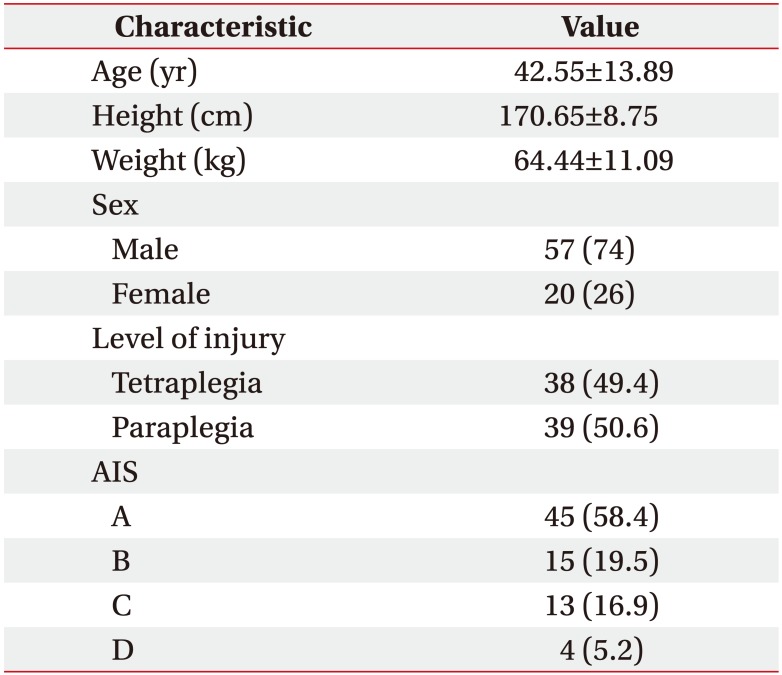
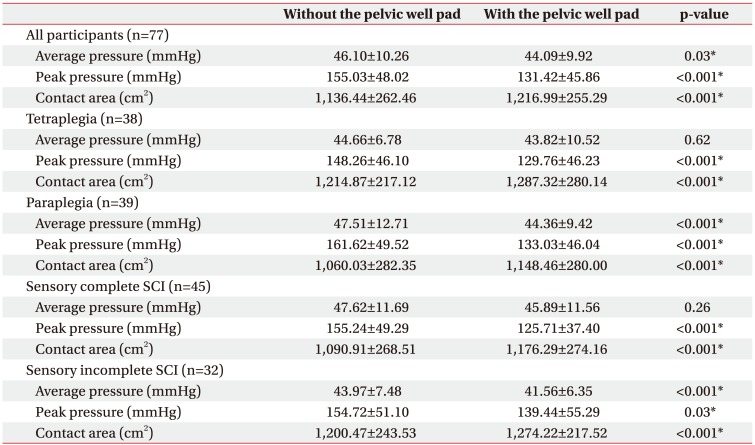
 XML Download
XML Download